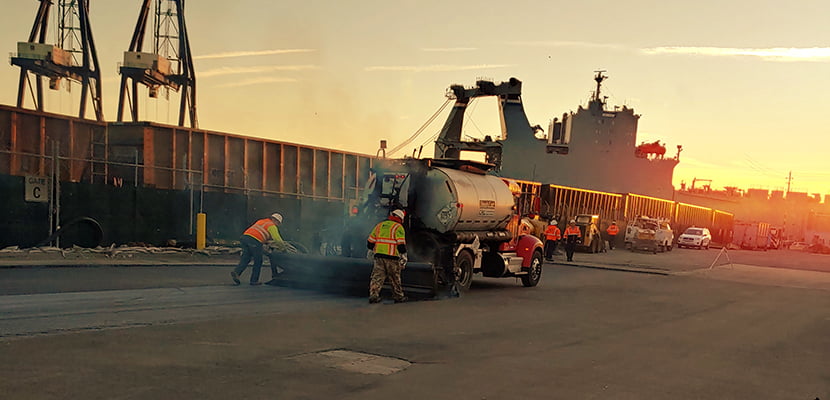We apply prime coat asphalt to granular bases in preparation for an initial layer (or surface course layer) of asphalt.
Why should I use a prime coat?
There are four primary purposes for the application of a prime coat on an aggregate base course;
- Coat and bond loose material particles on the surface of the base.
- Harden or toughen the base surface to provide a work platform for construction equipment.
- Plug capillary voids in the base course surface to prevent migration of moisture.
- Provide adhesion between the base course and succeeding asphalt course.
What asphalt materials should be used for prime coats?
For a prime coat to be effective it must be able to penetrate into the base course. Typically a light grade of medium curing cutback such as SC-70 will work well. However, these are cutback asphalts (asphalt cement by combining it with light petroleum oil) and “cure” or harden when the light oils evaporate into the atmosphere. As the light oils evaporate they release hydrocarbons into the air causing air pollution. As a result, EPA has severely restricted or eliminated the use of cutbacks for most areas of the U.S. Virginia Department Of Transportation (VDOT) discontinued the use of cutbacks more than 30 years ago when Virginia agreed to severely restrict the use of cutbacks in the late 1970’s as an offset to the emissions from a proposed oil refinery on the Chesapeake Bay. The refinery was never built but VDOT has stayed with emulsified asphalts (asphalt cement liquefied by suspending it in water) for surface treatment (chip seal), slurry seal, tack and prime applications ever since.

